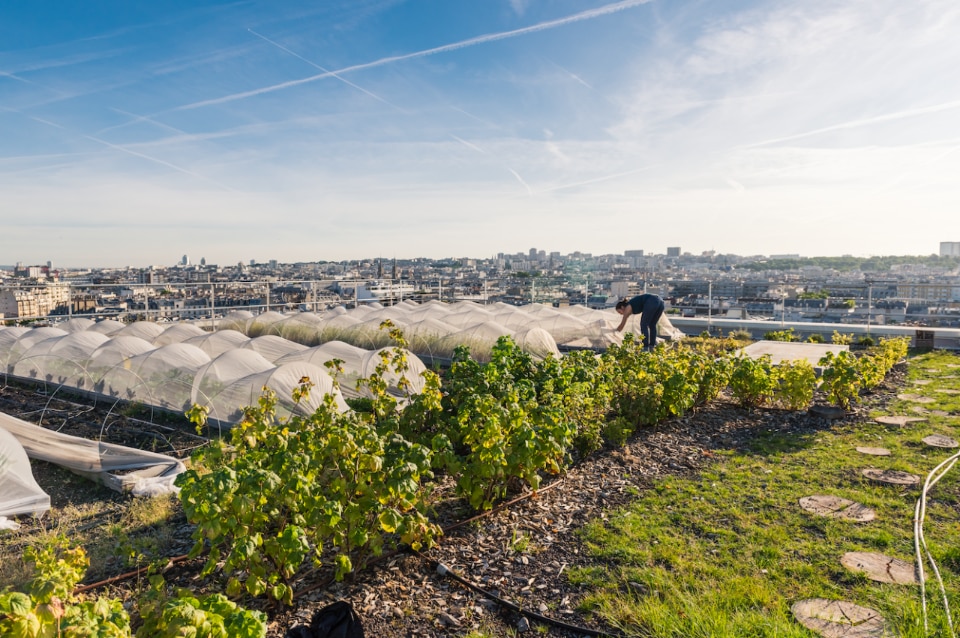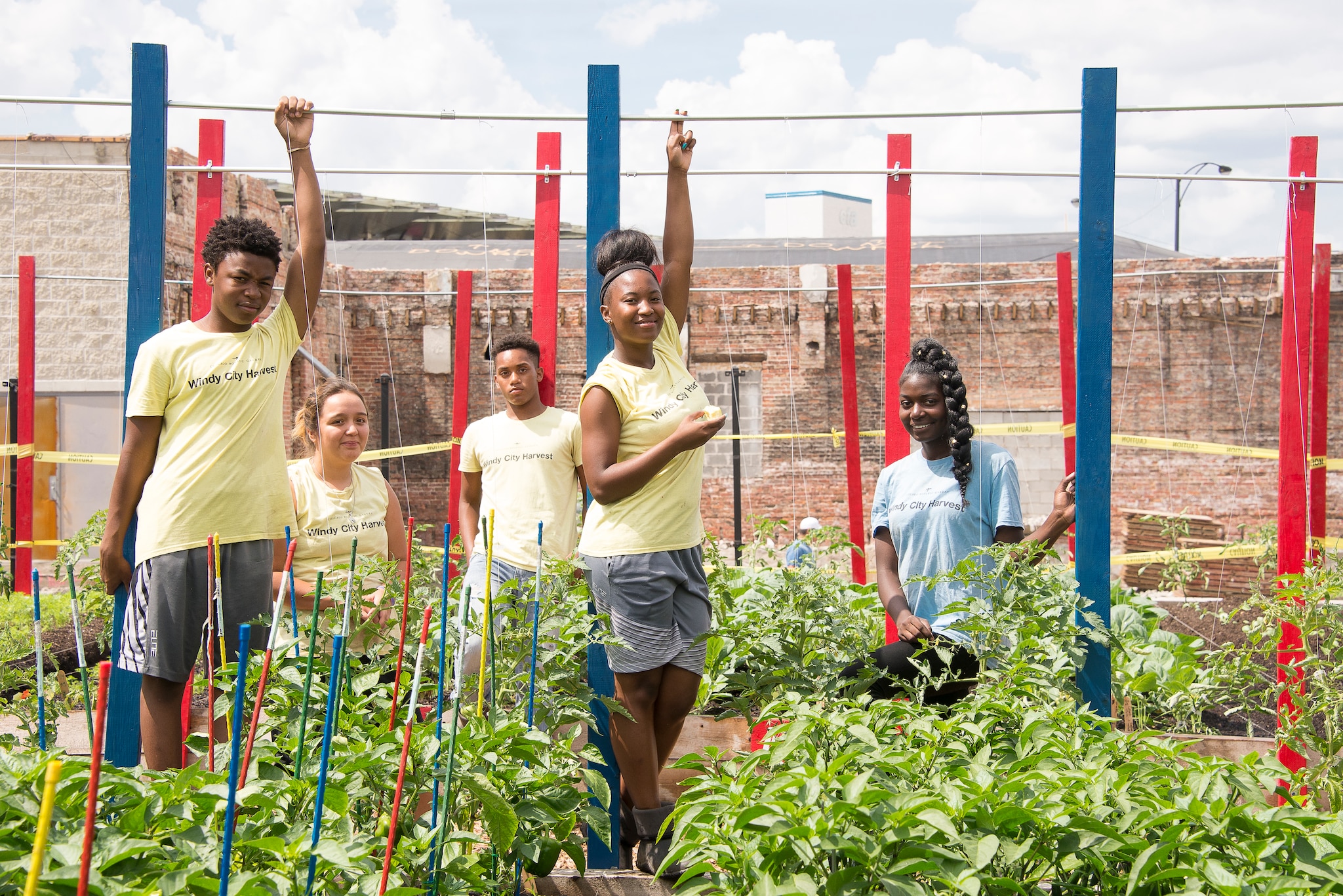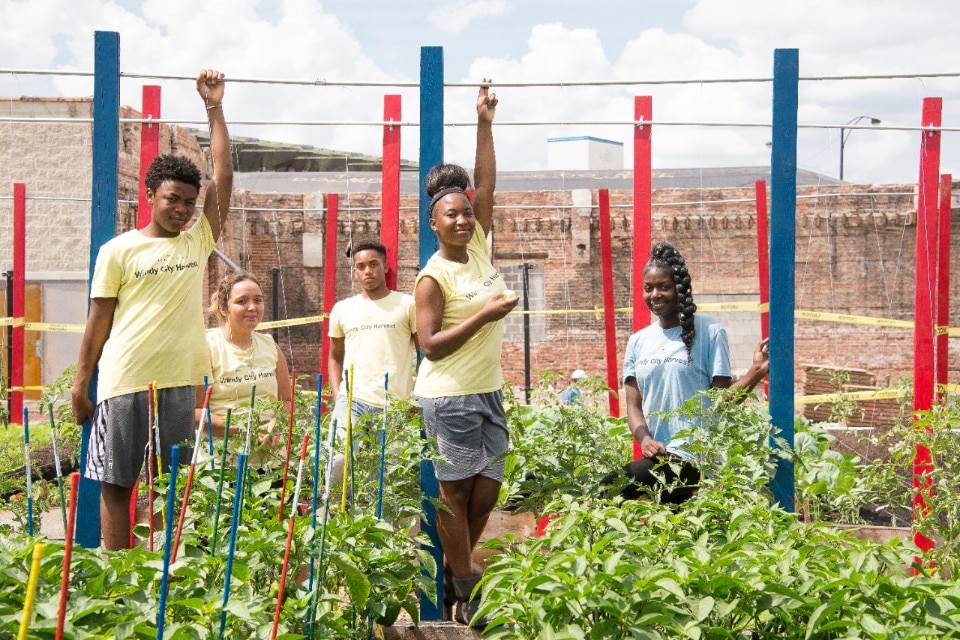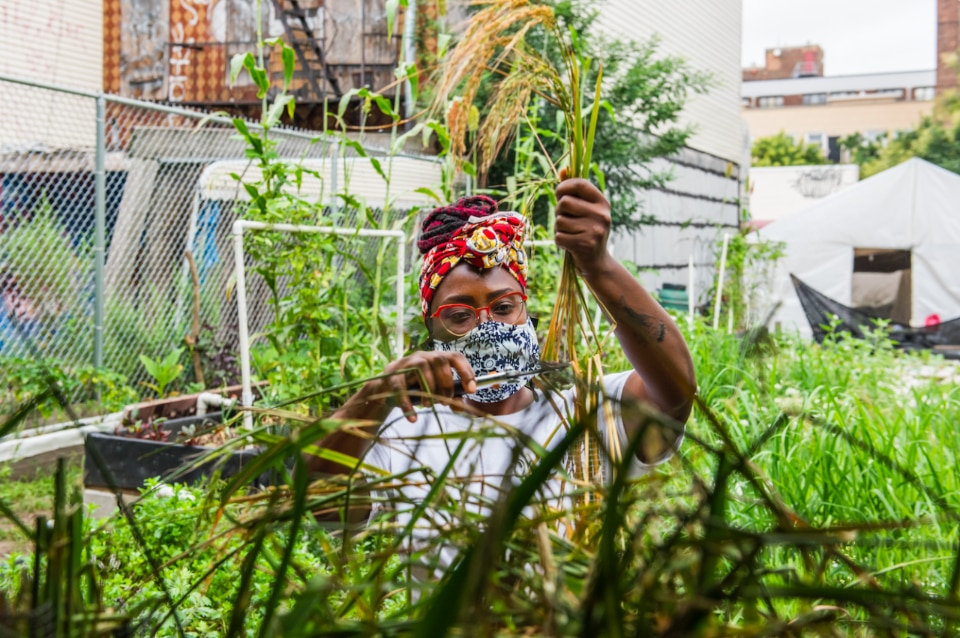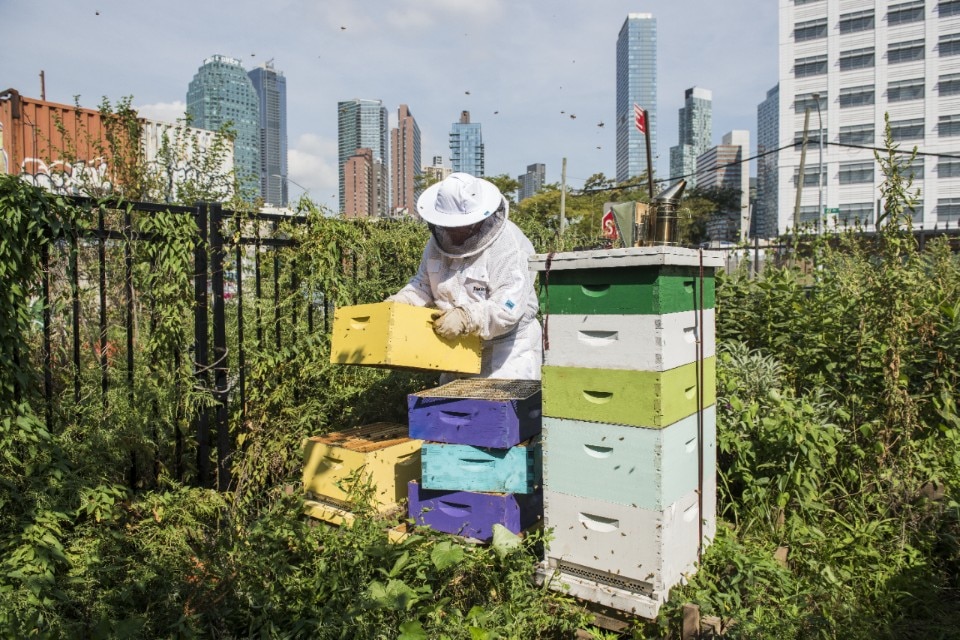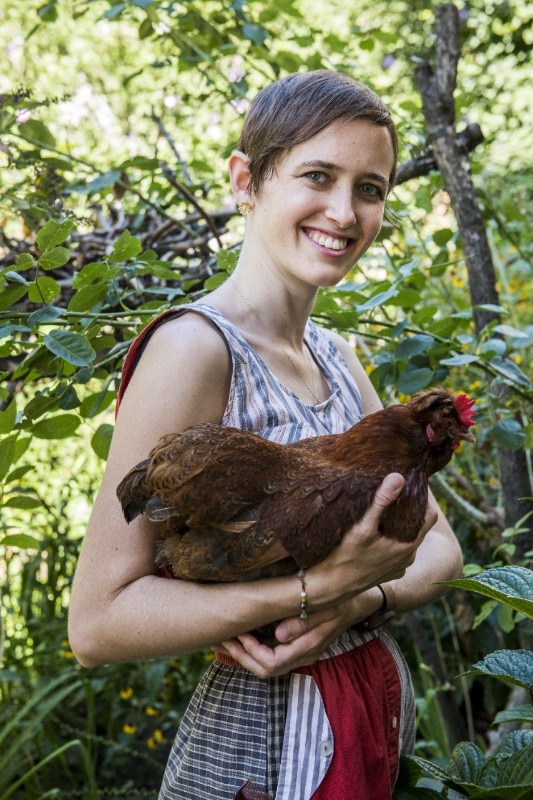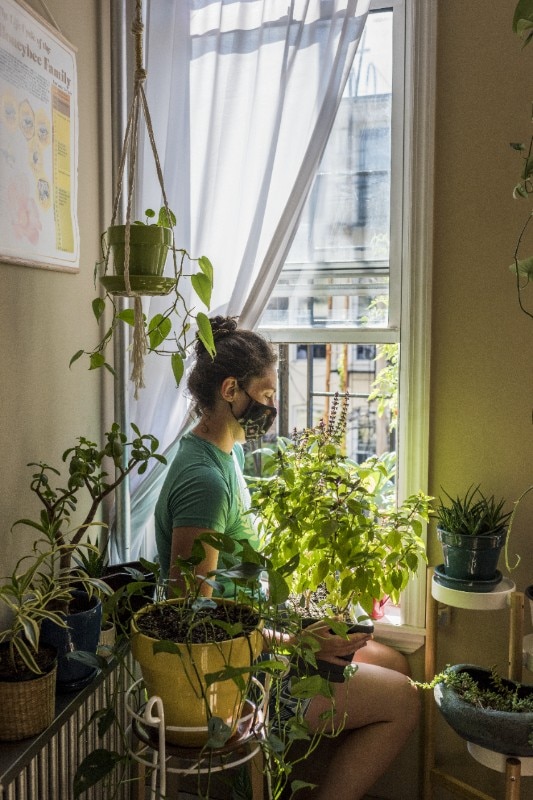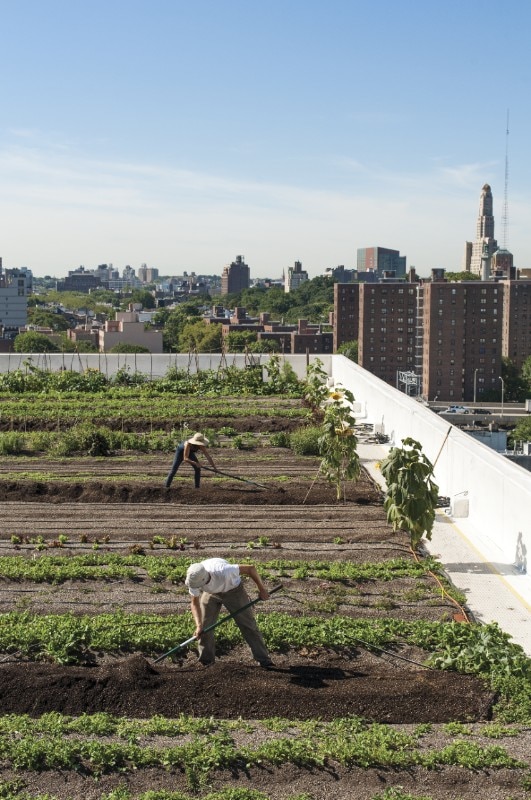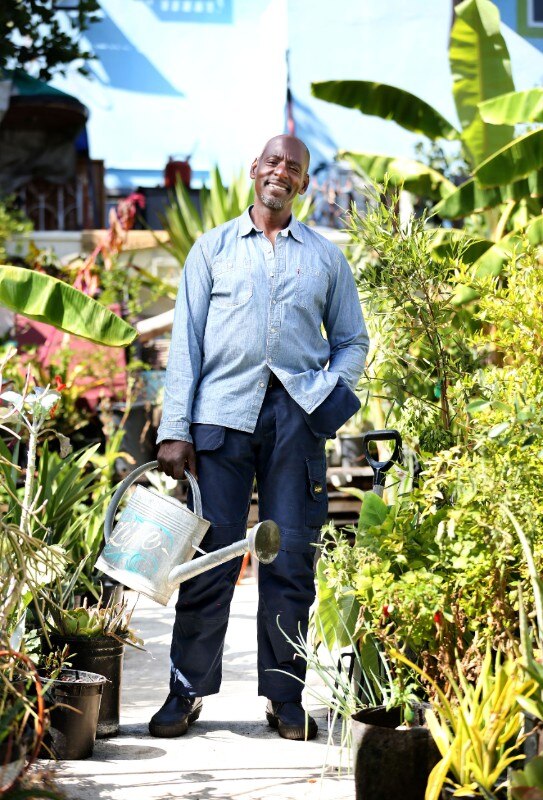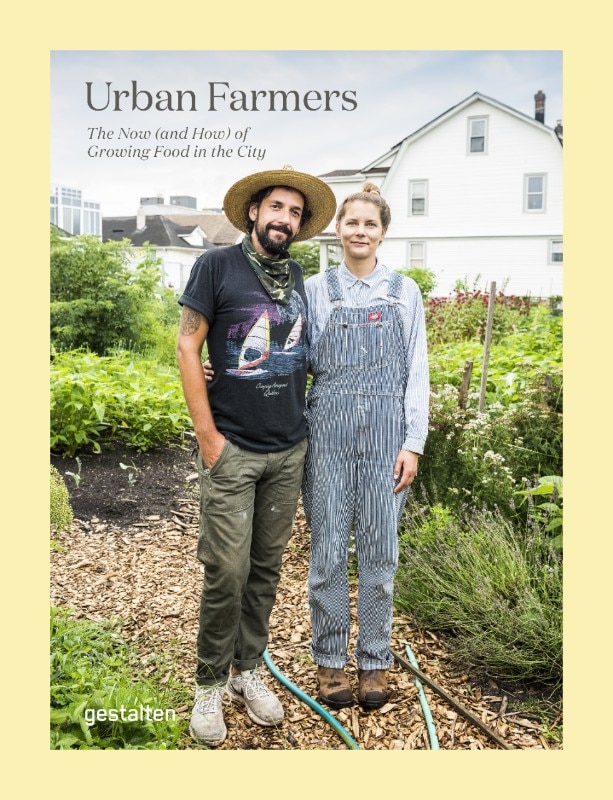NYC-based photographer Valery Rizzo became interested in urban agriculture when discovered Eagle Street Rooftop Farm, the first rooftop farm in Brooklyn, in 2011. She was fascinated by the idea of bringing nature inside her industrial city and this episode inspired her to start her backyard raised bed garden growing vegetables and pollinator perennials.
A few years later, when agricultural practices in urban areas had become more common as a way to promote biodiversity and a form of resistance to an increasingly less nutritious and more polluting food market, the photographer decided to start a personal project on that.
That's how the idea for Urban Farmers. The now (and how) of growing food in the city, a volume documenting urban agriculture around the world, was born. The book, edited by Gestalten, includes Valery Rizzo’s images, words by journalist and photographer Mónica R. Goya, and a series of illustrations by Gino Bud Hoiting. Domus discussed this body of work, the research behind it, and creative ways for growing food in the city with the photographer and the writer of the book.
Would you tell us about the research and curatorial phase of the volume Urban Farmers?
Valery Rizzo: The process started with the interest from Gestalten in exploring my idea for a book on urban agriculture around the world, just days before the first case of Covid-19 was confirmed in New York City, in February 2020. I started by widely researching on about 60 farms, and Gestalten’s Editor Andrea Servert came up with a possible structure for the book of 5 case studies: 6 profiles, 7 features, 4 guest essays, a 12 term glossary and a 5 part DIY section. From initial interest to press it took about a year. Since we were producing this book during a global pandemic, I planned to shoot 80% of the photography for the book and then source the rest from other photographers I greatly admire.
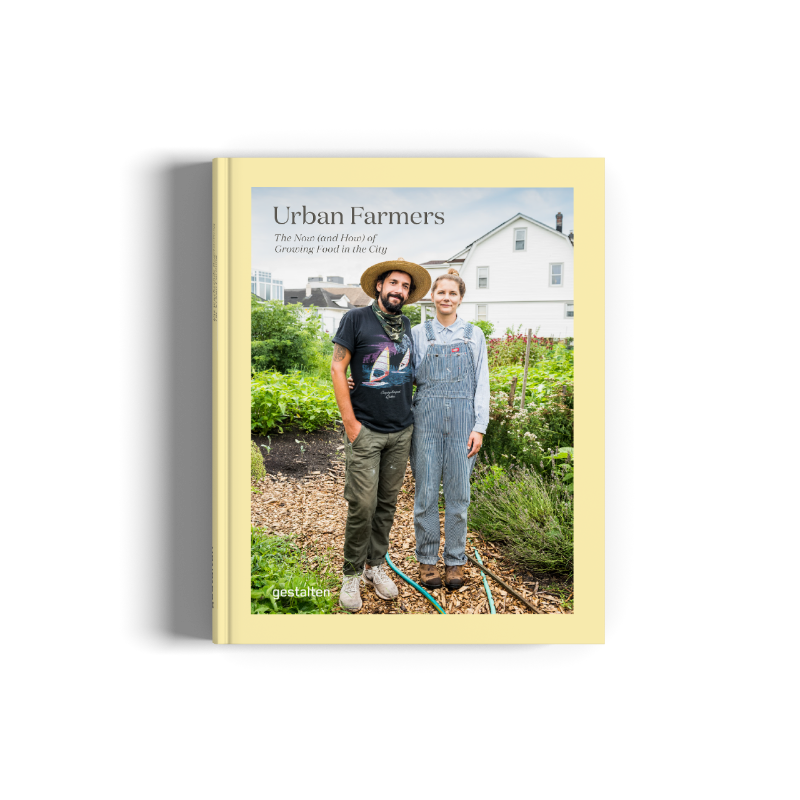
Which cities did you choose to include and why?
Valery Rizzo: The cities included are New York, Paris, Berlin, Cirebon, Detroit, Antwerp, Philadelphia, Boston, Chicago, Denmark, Amsterdam, Havana, Mexico City, Nairobi, Melbourne, Los Angeles, Curitiba, Montreal, Hong Kong, Brussels, London, Seattle and Tokyo, among others. Some of the subjects were already part of my larger existing body of urban agricultural work, while others were found collectively through various other means of research. Our goal was to make the book as diverse as possible by way of location as well as unique farming practices and to highlight the people doing important and exciting work.
Let’s talk about the urban farmers. Who are these people and why did they choose this lifestyle? Is there any particular story that made an impact on you and you’d like to share?
Valery Rizzo: There are as many reasons to start growing food as there are urban farmers. The people featured in the book are growers, activists, advocates of food sovereignty, chefs, educators, beekeepers, horticulture and environmental science students, viticulturists, gardeners, biodiversity experts and seed keepers. But also, agronomists, youth volunteers, artists and designers, software engineers, urban planners, food activists, thermal and agricultural engineers, environmentalists, postal workers, food entrepreneurs, bakers, cheesemakers, scientists and homesteaders. Sometimes they are community growing from necessity, others for ancestral connection. Each story in the book has its own unique quality which will leave you inspired. From Konekroot Farm in Java, an innovative farm created by women for women, to the circular community-driven composting program at Edgemere Farm in the Far Rockaways, to the meaningful work of Truelove Seeds in Philadelphia saving culturally important seeds as a way to connect with ancestors, to the burst of an inconceivable flavour in your mouth in the form of a specialty herb grown in a hydroponic underground vertical farm in NYC, the stories just continue.
Mónica R. Goya: It’s so hard to choose just one! But a story included in the book that resonated with me is the one of teacher Meredith Hill and her new primary school in New York City. I was absolutely amazed by her commitment to really making a difference as a teacher and the many shapes education can take and how it can adapt to the times we are living. Also, I am full of admiration for those leading urban farming projects in Latin America, especially in Mexico and Cuba, which are included in the book as a profile and part of a feature respectively.
Would you offer some examples of how urban farming practices have a social return?
Mónica R. Goya: Depending on the reasons behind an urban farm’s creation and how it’s managed, the social return can be huge. Not only they provide access to green space where urbanites of all backgrounds can enjoy the rare experience of growing food in the city, but if the farms have food justice and social justice ambitions, they can also provide life-changing benefits. Having urban farms in the city, particularly in underprivileged neighbourhoods that – more often than not – suffer a lack of greenery, can make a massive difference on many fronts. For example, we could take into account that the price of fresh healthy foods versus that of ultra-processed foods packed with empty calories makes the former less accessible and research show that risk of diabetes, a major public health issue worldwide, is associated with class and poverty. Also, urban farms can help build and empower communities by having people of all ages interacting and they can become an educational tool by offering those who don’t have access to the countryside an opportunity to experience how food is grown. Regular physical activity is another of the many advantages of urban farming.
Not only they provide access to green space where urbanites of all backgrounds can enjoy the rare experience of growing food in the city, but if the farms have food justice and social justice ambitions, they can also provide life-changing benefits.
On the other hand, how do they also promote biodiversity for plants and animals?
Mónica R. Goya: Scientists, landscape architects, and researchers talk about how cities could become green corridors and a refuge for biodiversity from the countryside that is severely affected by the heavy usage of agrochemicals, like in the case of pollinators. Outdoor urban farms can become part of those green corridors and, if fully integrated within the urban planning of cities, they can contribute to that network of green spaces providing a habitat for wildlife and allowing the occurrence of ecological processes. Usually, urban farms grow dozens of different crops, from beans to herbs or berries, including heirloom varieties as well as culturally significant crops for their communities, which is very beneficial for biodiversity (as opposed to mono-cropping cultures). Finally, like other green spaces, urban farms also improve water management, enhance air quality, and reduce the urban heat island effect.
Finally, how can food production in urban environments contribute to making our cities more sustainable and creating alternative micro-economies?
Mónica R. Goya: As many interviewees in the book pointed out, cities cannot be fed exclusively on what’s grown in urban areas. However, urban farms can create a dialogue by their mere presence, bringing food production closer to urbanites and hopefully sparking an interest in where food comes from and how is grown. This is vital, especially considering the current climate emergency and the role that food production plays in it. Furthermore, they can provide huge social benefits and become catalysts for new small businesses to flourish, creating a more resilient social fabric in the process.
For more information and purchasing the book, head to the publisher Gestalten's website.
Opening image: Topager, a project founded 2013 in Paris, creates edible urban landscapes. Their Opéra 4 Saisons is located on the rooftops and facades of the Opéra Bastille. Photo Valery Rizzo, Urban Farmers, Gestalten, 2021.


